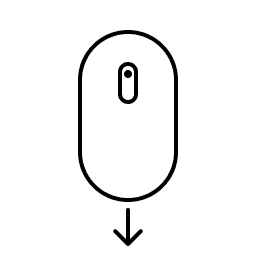Snippets about: Fun Facts!
Scroll left and right !
No One Knows How Consciousness Emerges From The Brain
Despite all that neuroscience has learned about the brain, no one really knows how networks of neurons produce the inner światło of consciousness. It seems impossible to explain subjective experience in terms of physical processes.
There appears to be an unbridgeable "explanatory gap" between objective descriptions of the brain and first-person experience. Some philosophers argue this gap can never be closed by science. Others believe consciousness may remain a mystery forever.
Section: 1, Chapter: 2
Book: Waking Up
Author: Sam Harris
Every Culture Has Its Own Idea Of "Tasty" That Drives Overeating
In the U.S., a "bliss point" of sugar, salt, and fat defines deliciousness. But "tasty" is relative across cultures - and it's not always healthy:
- In the Middle East, Captagon (a type of meth) is considered a tasty treat. Its use is surging, ravaging communities.
- The Tsimane tribe of Bolivia finds plain chicken and rice delicious. But when they encountered the Western diet, rates of heart disease spiked.
- In Medieval times, European nobility gorged themselves on meat - a status symbol. Gout and heart attacks were badges of high status!
This suggests overeating is only partly driven by flavor. Deliciousness is a cultural construct - and often one at odds with health. In every time and place, we elevate foods that are scarce, expensive, or forbidden. When those foods become abundant, we struggle to regulate.
Section: 1, Chapter: 8
Book: Scarcity Brain
Author: Michael Easter
How Phytoplankton From Dinosaur Era Affected 2020 US Election
During the Cretaceous period, an inland sea covered much of the southern US. The deaths of trillions of phytoplankton in this sea created nutrient-rich soil in a region that would become known as the Black Belt. Millions of years later, in the 1800s, enslaved Africans toiled on cotton plantations on this fertile crescent. After the Civil War, their descendants remained in the area due to social and economic factors.
Fast-forward to 2020: Black voters (who overwhelmingly vote Democrat) turned out in high numbers in Georgia's Black Belt region, narrowly swinging the state to Biden and handing Democrats control of the Senate. The political trajectories of Georgia and the US hinged on the exact locations of microscopic marine organisms when dinosaurs roamed the earth, illustrating the astonishing concatenation of geographic and human factors across vast timescales that shape historical outcomes.
Section: 1, Chapter: 8
Book: Fluke
Author: Brian Klaas
Tylenol Reduces The Neural Response To Social Rejection
In a remarkable study, researchers found that Tylenol (acetaminophen) reduced the pain of social rejection. Subjects took Tylenol or placebo daily for 3 weeks. Then they played a ball-tossing game while undergoing fMRI brain scans.
During the game, the other "players" (actually computer-controlled) began excluding the participant. For those who took Tylenol, both self-reported hurt feelings and neural responses to rejection in pain-related brain areas were significantly diminished compared to the placebo group. This suggests the brain processes social and physical pain similarly.
Section: 1, Chapter: 4
Book: Subliminal
Author: Leonard Mlodinow
Want To Prevent Terrorism? Make Them Buy Life Insurance
Based on an analysis of data on captured terrorists and would-be terrorists, Levitt and Dubner identify some common traits. Compared to the average person, terrorists are more likely to:
- Rent rather than own a home (due to not expecting to live long)
- Not have a life insurance policy (since it doesn't pay out for suicides)
- Make purchases in cash rather than credit/checks (to avoid paper trail)
- Have multiple ATM withdrawals of just under $3000 (to evade mandatory reporting limits)
The authors propose that banks and insurance companies could potentially use these insights to identify individuals at high risk of committing terrorist acts based on their financial and personal records. Of course, such profiling raises major privacy concerns and could ensnare some innocent people exhibiting these same behaviors. But in theory, companies and law enforcement could leverage this data to proactively intervene with would-be terrorists.
Section: 1, Chapter: 2
Book: Super Freakonomics
Author: Steven D. Levitt , Stephen J. Dubner
The Right Ear Is A Faster Lane To The Brain's Language Center
Due to the brain's cross-wiring, the left hemisphere controls the right side of the body, and vice versa. The left hemisphere is also the main site of language processing. So when someone speaks into your right ear, the signal reaches the brain's language centers faster. In noisy situations like nightclubs, people instinctively turn their right ear toward the sound. They also respond more readily to requests made on the right. But the left ear has an edge in decoding tone of voice. So if you're having trouble reading someone's emotion through their words alone, try shifting the phone to your left.
Section: 1, Chapter: 13
Book: You're Not Listening
Author: Kate Murphy
The Uneven Division of Unpaid Labor
Globally, women do significantly more unpaid work than men, and this disparity persists even as more women enter the paid workforce. On average, women do 4.5 hours of unpaid work per day compared to men's 1.5 hours.
- In India, women spend 6 hours a day on housework compared to men's 13 minutes
- American women do 4 hours of unpaid work per day vs 2.5 hours for men
- Even in Norway, with a relatively gender-equal culture, women do more unpaid work
Time use data shows that when women reduce their unpaid work, it is usually because they are doing more paid work - not because men are contributing more. Men consistently fail to match women's unpaid contributions, regardless of employment status or income.
Section: 2, Chapter: 3
Book: Invisible Women
Author: Caroline Criado Perez


